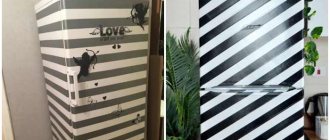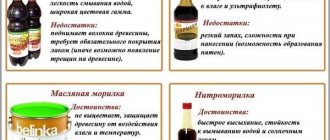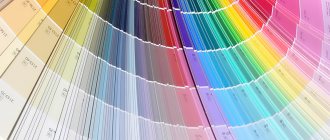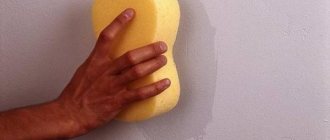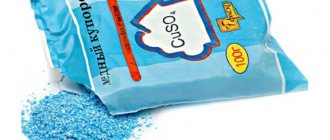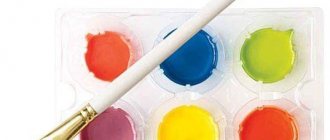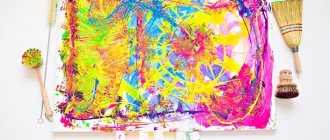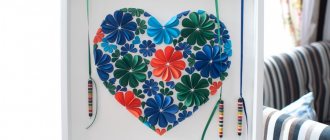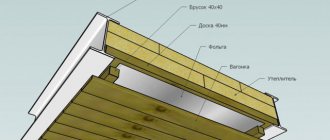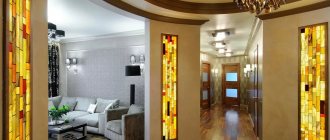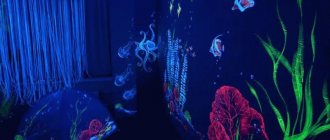For those who want to add some zest or a bit of originality to their interior, you can consider a simple room decoration option. What is it about? We're talking about pearlescent paint. Its peculiarity is that special pigments in the paint refract light, so at different angles and under different lighting the surface of walls or other surfaces will look different. This is an amazing visual effect. Velvety surfaces are considered noble and original. This paint is used to create unusual finishing options. It is used to treat the entire ceiling or wall, or some of its sections.
What is special about pearlescent paint for finishing? Why does it have such an effect? What surfaces can be painted with pearlescent paint? What do the treated surfaces look like? We will look at the answers to these questions in this article.
Why does the composition have a velvety effect?
If everything is clear with ordinary paint, since it contains a simple coloring pigment, then what explains the pearlescent effect of the composition? Its beautiful and unusual effect is obtained due to the presence of a special powder pigment in the composition. It is when rays of light hit it that they begin to crumple.
The degree of refraction of light rays directly depends on the amount of pigments contained in the dye. So it turns out that after applying the pearlescent composition, the walls have a velvety effect. It looks just great, as you can see in the photo.
Powder pigments Pearl Ex (metallics, mother of pearl)
Number of products: 45
Very fine powder pigment. Can be added to all paints and varnishes. Jar 22 g.
Very fine powder pigment. Can be added to all paints and varnishes. Jar 22 g. Made in USA....
Very fine powder pigment. Can be added to all paints and varnishes. Jar 22 g.
Very fine powder pigment. Can be added to all paints and varnishes. Jar 14 g.
Very fine powder pigment. Can be added to all paints and varnishes. Jar 21 g.
Large jar of gold pigment, 113 g (4 oz).
Very fine powder pigment. Can be added to all paints and varnishes. Jar 21 g.
Very fine powder pigment. Can be added to all paints and varnishes. Jar 22 g.
Very fine powder pigment. Can be added to all paints and varnishes. Jar 22 g.
Very fine powder pigment. Can be added to all paints and varnishes. Jar 14 g.
Very fine powder pigment. Can be added to all paints and varnishes. Jar 14 g.
Very fine powder pigment. Can be added to all paints and varnishes. Jar 14 g.
Very fine powder pigment. Can be added to all paints and varnishes. Jar 21 g.
Jar of pearlescent powder, 24 g.
Very fine powder pigment. Can be added to all paints and varnishes. Jar 22 g.
Very fine powder pigment. Can be added to all paints and varnishes. Jar 22 g.
Very fine powder pigment. Can be added to all paints and varnishes. Jar 22 g.
Very fine powder pigment. Can be added to all paints and varnishes. Jar 22 g.
Very fine powder pigment. Can be added to all paints and varnishes. Jar 22 g.
Very fine powder pigment. Can be added to all paints and varnishes. Jar 22 g.
Very fine powder pigment. Can be added to all paints and varnishes. Jar 22 g.
Very fine powder pigment. Can be added to all paints and varnishes. Jar 22 g.
Very fine powder pigment. Can be added to all paints and varnishes. Jar 22 g.
Very fine powder pigment. Can be added to all paints and varnishes. Jar 22 g.
Very fine powder pigment. Can be added to all paints and varnishes. Jar 22 g.
Very fine powder pigment. Can be added to all paints and varnishes. Jar 22 g.
How can pearlescent paint be produced?
If you are excited about the idea of using pearlescent paint in your decoration, then you need to understand what exactly to buy in the store. The thing is that construction stores can sell pearlescent pigment in a variety of forms. Let's look at them in more detail.
- In powder form. The good thing about this consistency or type of pigment is that to get a pearlescent composition, you just need to add it to your acrylic-based dye. As a result, you will get your own pearlescent paint of the desired color range. You can also adjust the degree of effect yourself by adding a lot or little pigment. The disadvantage is that without proper experience, you can dilute the components incorrectly and unevenly, and the paint will be lumpy.
- In the form of a paste. It is also very convenient; it can be mixed with acrylic enamel, creating a wide variety of color schemes. The finished paint is homogeneous and easier to use. The disadvantage is that, unlike powder, its service life is much shorter. Therefore, after purchasing it, it is recommended to use it quickly.
- The last type is ready-made pearlescent wall paint. It doesn't need to be created. It is enough to buy the composition and use it immediately. This is an ideal option for beginners who do not know how to mix ingredients correctly. You just need to open the paint and start working on the surfaces.
The advantages of acrylic compositions with pearlescent pigment are that after drying they become durable and have excellent resistance to environmental influences. Therefore, there is no need to additionally protect the surface of the walls. The paint is used as a final finish for the facade of a room, a means for creating patterns on fences, as well as for decorative finishing of walls and ceilings indoors.
There is one nuance that concerns pearlescent paint of some colors. For example, gold color is used exclusively for interior decoration. Why? Because it will fade quickly when exposed to ultraviolet rays. But as for silver pearlescent paint, it can be used anywhere. It has high strength and resistance to atmospheric influences.
How to paint a car chameleon, metallic, pearl? How to create a color and paint it yourself?
In this article I would like to consider in detail the process of painting a car with the effect of chameleon, metallic, mother-of-pearl, glitter, holographic and others. Manufacturers of car paints and car painting studios intimidate us with unrealistic price tags when they hear the words “chameleon”, “holographic”, “candy” and other effects, although in fact you can easily not only create such paints yourself, but also produce them well and with high quality coloring
How much powder pigment is needed to create a good color? What will the cost be?
If we consider such bright and large additives as glitter and holographic, then their consumption per car will be significantly higher: - average sedan: 200-300 grams; - SUV: 300-450 grams.
How to add powder pigment correctly?
Let's take, for example, 2.5 and 5 liters of transparent base and pour 100 grams of powder pigment into both jars. In the first case (100 grams of pigment per 2.5 liters of binder), we will have to evenly spread a very rich and opaque color evenly over the entire body with 2 layers (1.25 liters of paint on average takes 1 layer). In the second case (100 grams of pigment per 5 liters of binder), we will paint the body in 4 uniform layers, which will allow us to more likely spread the pigment perfectly and evenly over the entire car body or other surface to be painted. We highly recommend that you use a technology that involves applying more layers (lower concentration of pigment per liter of material) to obtain the best and highest quality final result. This rule works both for conventional automotive paints and for liquid rubbers and heavy-duty polyurethane protective coatings.
What is the difference between working with regular car paints, solid colors and exclusive paint?
So, as we discussed earlier, we prepare the car as if it were a regular paint job, be it auto enamel, liquid rubber or a protective coating. After all standard preparation procedures have been completed (we do not describe them in detail, since they differ for each coating and are standard for any color), we proceed directly to applying the color base we have chosen to the car body or other surface (specifically in our For example, for convenience, let's consider a black substrate; for other substrates the procedure will be the same, just the final effect will be different).
Thus, it turns out that the differences in painting are not so significant, but in the end you can create incredible masterpieces using powder pigments of various colors and effects! Come up with new unusual projects together with your clients, experiment with pigments and color substrates, create the most daring and unusual projects that simply have no analogues, in a word, make this world more colorful, brighter and kinder!
